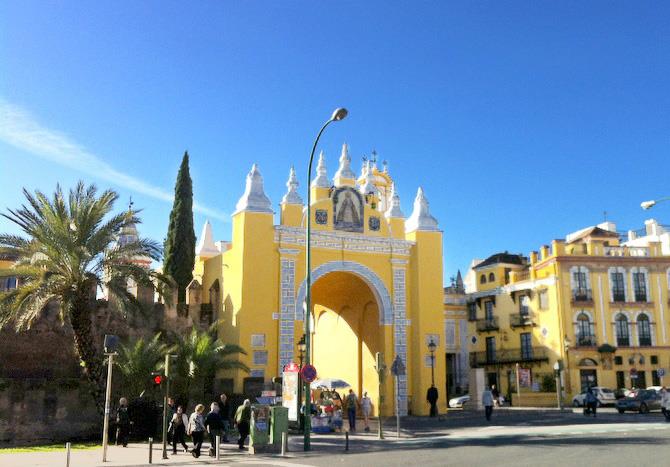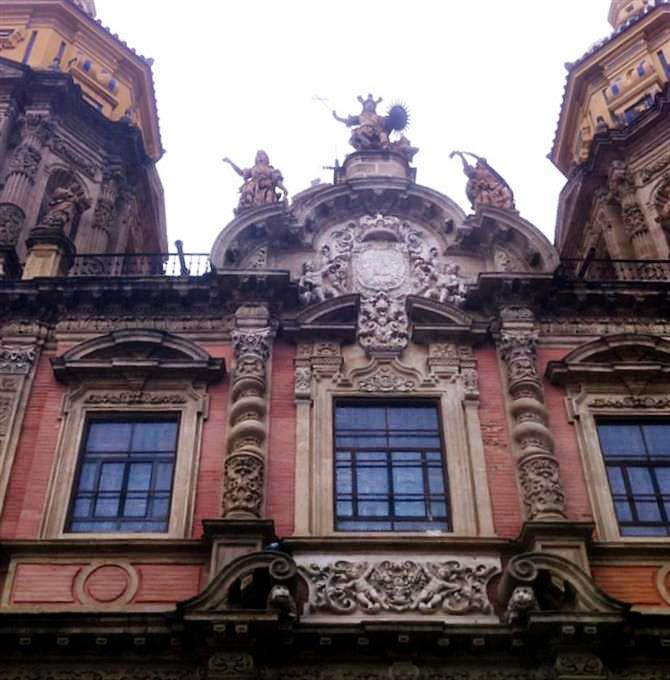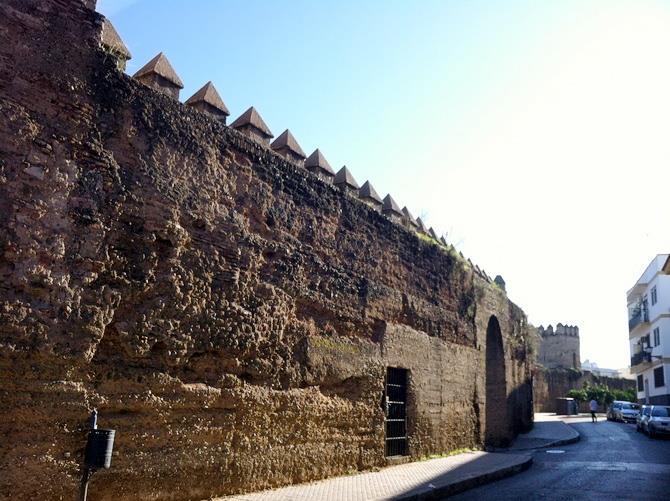Thanks in part to the sterling work of Los Del Rios and their hugely successful earworm, the Macarena is probably the best known (in the sense of "most heard of") neighbourhood in Seville, and possibly in Spain, though the connection between song and place is only a loose one. The use of Macarena as a girls' name is popular because of a local religious symbol, La Virgen de la Esperenza de Macarena (the Virgin of Hope), one of the statues that appears in the Semana Santa (Holy Week) processions. The name may originally be derived from Greek (Macarisuena was a daughter of Hercules, commonly identified as one of the founders of the city), from a certain Macarius, popularly supposed to have been a local Roman landowner, or from the name of the north gate of the Moorish city, which was called Bab-al-Makrin.

The Macarena forms the north-eastern quarter of the casco antiguo, or old city, bounded to the west by Calle Feria, to the south by Calle Escuelas Pías, and to the east by the inner ring road, which runs just outside the course of the old city walls. It was created in the twelfth century by the Almohades, the last dynasty of Moorish rulers, who enclosed the area of orchards and market gardens to the north of the old city with a new wall, a long section of which can still be seen extending south east from the Macarena gate, and give a good idea of what the city would have looked like to an approaching traveller.
Once enclosed, however, it fell victim to a long process of urbanization as the result of the pressure of a growing population on the limited space available in a walled city, though a small remnant of its origins can be glimpsed in the so-called "Garden of the Moorish King" in Calle Enladrillada. In later times it is said to have been the poorest slum in Spain, and though that is not evident today it is still a largely working class area with an authentic feel of the daily life of ordinary people.

The famous statue of the Virgin of Hope "lives" in the Macarena Basilica (which was built in the 1940s specifically for this purpose), and is the centrepiece of one of the most popular of the Semana Santa (Holy Week) processions which takes place in the early morning of Good Friday, and still draws huge crowds. Even if you're not religious these big processions, with the figures of the Virgin and the Christ swaying on their platforms as they are carried through the streets can be quite emotional. The statue of the Virgin is a valuable artwork in its own right, and was created in the 17th century by Pedro Roldán, or possibly by his daughter Luisa in his workshops (a female artist was unusual in those days).
Just outside the Macarena gate is Andalucia's splendid parliament building. This impressive edifice, one of the largest in the city, was built in the 16th century as a hospital for women, and was called El Hospital de las Cinco Lagas de Nuestro Redentor (Hospital of the Five Wounds of Our Saviour), though it later also served as a plague hospital and also a military hospital. It didn't finally close until 1972, and was converted for use by the Junta de Andalucia in 1986.
From the Basilica and gate, La Macarena's main street, Calle San Luis, runs right through the middle of the neighbourhood to the Plaza and church of San Marcos, and with a change of name, on to Santa Catalina. For many years it was called the Calle Real (Royal Street), as it was the route used by a number of monarchs, including the Catholic kings Ferdinand and Isabella, Carlos I (on his way to his wedding with Isabela of Portugal at the Alcazar Palace) and Felipe IV, for their ceremonial entrance into the city. The name was changed to San Luis after the building of the Jesuit church of San Luis de los Franceses in the early 18th century, whose baroque facade, considered one of the best in Europe, can be seen about halfway along.

The old chuches of San Gil, Santa Marina and San Marcos, all built on the sites of former Mosques, and still retaining some of their Moorish features, are all worth a look, too. My favourite place on San Luis is the Pumarejo palace. Built in the 18th century (the square in front was created at the same time by the demolition of a block of houses), it's now an apartment building with an air of dilapidated former splendour, romantic for visitors, but not so great if you live there; a sensitive restoration is definitely called for.

The Macarena's other main street, Calle Feria, is busier and more commercial, an old style “high street” lined with small shops (real shops selling useful stuff to local residents, not souvenir shops) and bars. The street is named for the late mediaeval market that was licensed here since 1254, shortly after the Christians reconquered the city, to revitalise the economy of the city after the departure of many of its Moorish inhabitants. It's even mentioned by Cervantes, the author of Don Quixote, who lived in Seville for a time.
The El Jueves (Thursday) “antiques” market is its direct descendant, making it the oldest continually operating market in Europe. Its character has, of course, changed a lot through the centuries. It's now mainly a second hand market, selling books, toys, bric-a-brac, and pretty much everything else. The sellers set up their wares on small tables or blankets spread on the ground (mainly in the narrowest section of the street) around 7am and the market carries on until around midday to lunchtime. Fun to have a browse around, or to people watch from one of the bars.
A little way up the street, and also derived from the original mediaeval fair, is the Feria provisions market, the oldest in Seville. The building, sandwiched between the 13th century Omnium Sanctorum church and the Algaba Palace, which houses the little Mudjar centre, is from the 18th century, but recently refurbished. It's small and intimate, with a real feeling of being a place the locals come to, and there's all those colourful displays of fresh fruit and veg, meats, and fresh fish and seafood to drool over. Part of the fish market has been upscaled to a food court, but I still prefer the original market bar La Cantina, which does some of the best fried straight-from-the-market fresh fish in town, and is the place to finish up in after a morning's shopping or exploring. Enjoy!
